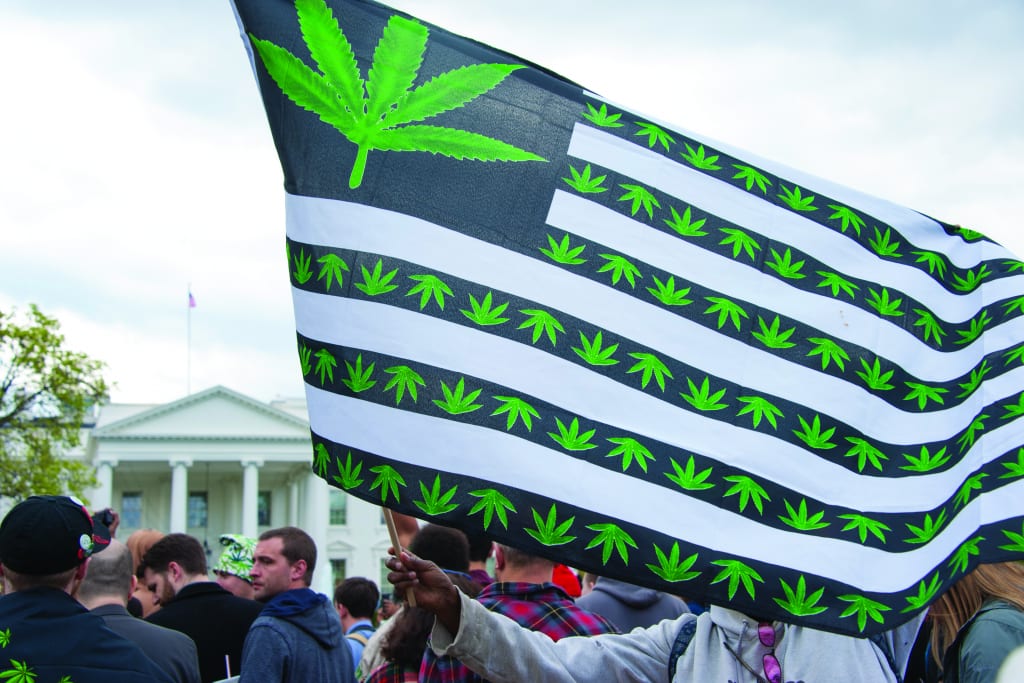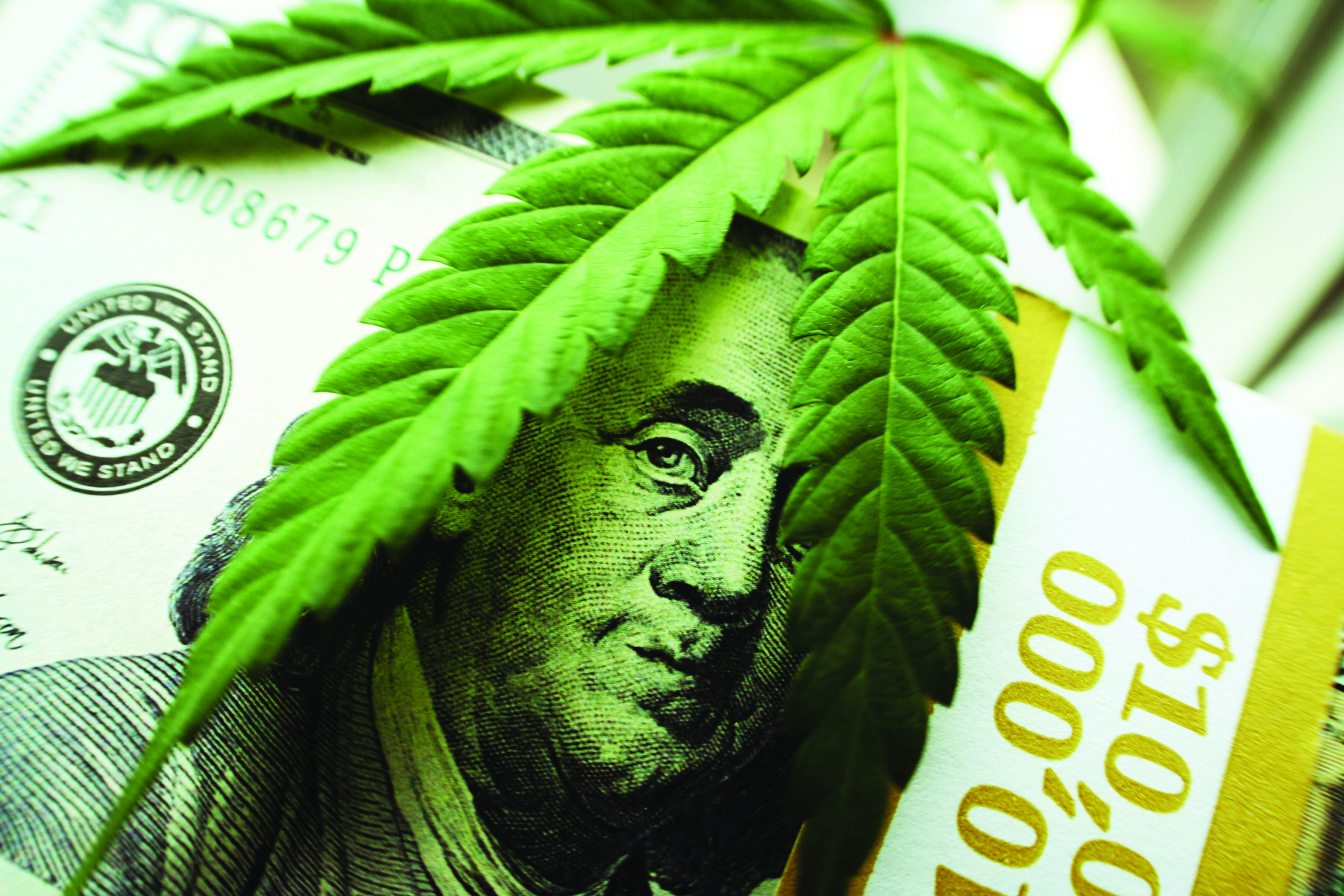The Unites States is entering into its seventy-eighth year of cannabis prohibition. It is a violation of federal law to distribute cannabis throughout any place in the Unites States. It is estimated the national cannabis black market generates more than $30 billion in untaxed and unregulated sales annually. The industry, the federal and state government and the legal system are at a crossroads; one foot of the industry is still firmly planted in the shadows with the other striding toward legitimate commerce, awaiting a pathway to legal compliance. Voters at the state level, through citizen sponsored ballot initiatives, have approved the legal sales of medicinal and/or recreational cannabis. Currently, more than 190 million people, 59 percent of the U.S. population have access to “legal” medical cannabis. More than 68 million Americans, 21 percent of the U.S. population, have access to “legal” recreational cannabis.
The industry as a whole is projected to exceed $20 billion in taxed and regulated sales by 2021.
Sales of legal cannabis has grown to $6.6 billion as of 2016 that includes $4.7 billion for medical and $1.9 billion for recreational. The industry as a whole is projected to exceed $20 billion in taxed and regulated sales by 2021. Medical cannabis is legal in 29 states; Alaska, Arizona, Arkansas, California, Colorado, Connecticut, Delaware, Florida, Hawaii, Illinois, Maine, Maryland, Massachusetts, Michigan, Minnesota, Montana, Nevada, New Hampshire, New Jersey, New Mexico, New York, North Dakota, Ohio, Oregon, Pennsylvania, Rhode Island, Vermont, Washington, Washington, D.C., West Virginia, and Puerto Rico and Guam. Recreational cannabis, which is cannabis consumed without a doctor’s recommendation, is currently available in 8 states; Colorado and Washington were the first two states to legalize cannabis for adult use in 2012. Oregon, Alaska, and the District of Columbia came next, passing measures to legalize recreational cannabis use in 2014. Most recently, California, Nevada, Massachusetts, and Maine all passed voter initiatives in the 2016 general elections to legalize cannabis for adult recreational use. In addition 5 states; Tennessee, Texas, Utah, Virginia, and Wisconsin are currently pursuing cannabis legalization legislation. In all, it is anticipated by the end of 2018, more than 80 percent of States will have decimalized and/or will permit regulated cannabis sales.
State by state new legislation and corresponding systems are being put in place to provide cannabis industry operators a pathway to legitimacy, and for the state, taxation and enforcement. The previous administration issued the Cole Memorandum in 2013, in which it offers guidance to federal prosecutors and law enforcement agencies on where to, and not to, focus its efforts. The document allowed states to develop markets with minimal federal oversight or interference. Before the issuance of the Cole memorandum, recreational cannabis use was not permitted anywhere within the Unites States. Furthermore, Congress has for the third consecutive year passed the Rohrabacher-Farr amendment, a fiscal amendment to prohibit the use of federal funds by the federal government to prevent any state from implementing their own laws that authorize the use, distribution, possessions or cultivation of medical cannabis. Although there are numerous (approximately 60) proposed bills and documents offering similar protections for recreational cannabis sales and use, currently there is no federal mechanism which protects the industry from interference from the Department of Justice or other federal enforcement agencies. The current administrations intentions in regard to cannabis use still remain unclear, but what has been made clear is the citizens and the states desire to regulate cannabis use. According to recent Quinnipiac polls, more than 71 percent of Americans are in favor of legalized medical cannabis sales, and more than 55 percent are in favor for legal recreational sales.

Taxation, regulation, and enforcement is the new mantra in regards to cannabis use and sales at the state level. America has been in an official “war against drugs” since the Reagan administration, and the federal government has mostly put the financial burden of that campaign onto the states. Within the states, the burden has been primarily transferred to an already overburdened local city law enforcement and prison systems. Coming out of the major worldwide recession of 2008, most cities could no longer handle the cost burden of enforcement and jailing for an activity most constituents through voter initiatives were pushing to legalize. Rather than wait for politicians to make change, citizen groups across the country took a grass roots approach to end spending on a widely viewed as failing campaign originating from 1939. With little way in terms of legal recourse from the newly minted laws, most states have pivoted and have moved toward taxation and regulating the use and provide compliant cannabis business operators limited immunity from federal enforcement agency prosecution. States have moved to generate tax revenues, versus enforcement expenditures, over the cannabis black market.
State regulations rely heavily on land use and zoning ordinances to maintain control over proliferation and to address public safety concerns. As with other sensitive use industries, the states are using real estate as the cornerstone of the legitimization process. In order to be compliant with the states regulations and successfully obtain and maintain licenses and permits, first and foremost the real estate must be compliant with state and local city regulations. Since the legalization of all cannabis sales in Colorado occurred in 2012, Denver County has seen over 30 percent of all industrial real estate being used to cultivate cannabis for legal sales at two or three times the market rate rents. As of 2016, Colorado cannabis sales topped $1.2 billion in gross revenues, representing nearly 4.2 million square feet in cannabis cultivation space within Denver County alone. When taking into account more than 34 states representing more than 200 million people and more than $20 billion in annual sales by 2021, the industry on a national level will absorb tens of millions of square feet of real estate at above market rents and sales prices.

Upon the states completion of the infrastructure to its pathway to compliance via a licensing process, the states will protect its new tax revenues through heavy enforcement and major disruption of black market operators, primarily targeting cultivators. National black-market operators, which garner a $30 billion market and represent billions in untapped tax revenues, will be forced to move toward compliance and regulation or be forced out of business or prison. Cannabis regulation is a story of conversation from black market to regulation, and not one of creating an entirely new industry. Best in class market operators with existing legitimate distribution channels, medical sales, regulation represents an opportunity to participate in the mainstreaming of cannabis sales and consumption. The vast majority of black market operators cannot afford to purchase their own real estate, particularly in high value markets such as California, as they do not have access to leverage. This conversion from black market to regulated market will be the single largest opportunity industrial real estate has seen since the e-commerce expansion. The cannabis industry represents tremendous opportunity to real estate holding and leasing companies, in the tune of hundreds of millions of dollars of leasing incomes spread out over tens of millions of square feet of real estate throughout the United States.











Leave A Comment